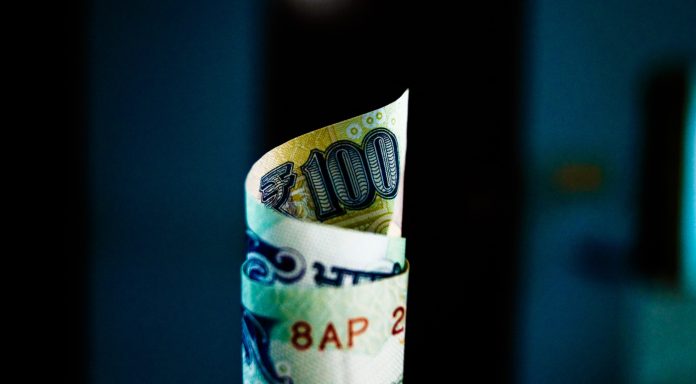After a shaky start on Tuesday, the pound rallied hard versus the dollar later in the day. The pound US dollar exchange rate picked itself up from a three week low of US$1.2833 to a peak of US$1.2910.
| What do these figures mean? |
|---|
| When measuring the value of a pair of currencies, one set equals 1 unit and the other shows the current equivalent. As the market moves, the amount will vary from minute to minute.For example, it could be written:1 GBP = 1.28934 USD Here, £1 is equivalent to approximately $1.29. This specifically measures the pound’s worth against the dollar. If the US dollar amount increases in this pairing, it’s positive for the pound. Or, if you were looking at it the other way around:1 USD = 0.77786 GBP In this example, $1 is equivalent to approximately £0.78. This measures the US dollar’s worth versus the British pound. If the sterling number gets larger, it’s good news for the dollar. |
The pound put in a solid performance in the previous session despite two risk events. Firstly, UK Prime Minister Theresa May giving a Brexit speech before Parliament. Secondly, the Bank of England Governor Mark Carney spoke in London.
The pound rallied after Theresa May pleaded with Parliament to give her more time to renegotiate with Brussels. Theresa May is trying to change the Irish backstop arrangement in an attempt to make her Brexit deal more palatable for ministers in Parliament. There will be a meaningful vote on the direction of Brexit in Parliament on 27th February. The move pleased pound traders. Suspicions are building that Theresa May is running down the clock in the hope of pushing her deal through a Parliament.The alternative is that she will extend the deadline to continue negotiations. Either should ensure a softer Brexit, which is more pound friendly.
| Why is a “soft” Brexit better for sterling than a “hard” Brexit? |
|---|
| A soft Brexit implies anything less than UK’s complete withdrawal from the EU. For example, it could mean the UK retains some form of membership to the European Union single market in exchange for some free movement of people, i.e. immigration. This is considered more positive than a “hard” Brexit, which is a full severance from the EU. The reason “soft” is considered more pound-friendly is because the economic impact would be lower. If there is less negative impact on the economy, foreign investors will continue to invest in the UK. As investment requires local currency, this increased demand for the pound then boosts its value. |
Pound traders paid little attention to BoE Governor Mark Carney when he spoke. His appearance came just days after the central bank downwardly revised growth forecasts. As he added no new information to what market participants received last week, the pound barely reacted.
The pound could come under pressure today as investors look towards UK inflation data. Analysts are expecting inflation to tick lower in January to 2%, down from 2.1%. Softer inflation is not going to encourage the central bank to tighten monetary policy. Therefore, weakness in the numbers could send the pound lower.
Will US Inflation Drag The Dollar Lower?
The recent rally in the dollar paused on Tuesday, snapping a three day winning streak against the pound. As the US — Sino trade talks continue, investors remain optimistic that progress will be made. As sentiment improved, flows out of safe havens, such as the dollar, increased.
Today investors will be watching US inflation figures closely. Analysts are expecting US inflation to have tumbled to 1.5% in January, down from 1.9% the month previous. This would represent a big fall in inflation and could hit demand for the dollar hard. It would confirm a more cautious stance from the Fed with the prospects of a rate increase being pushed back.
| Why do raised interest rates boost a currency’s value? |
|---|
| Interest rates are key to understanding exchange rate movements. Those who have large sums of money to invest want the highest return on their investments. Higher interest rate environments tend to offer higher yields. So, if the interest rate or at least the interest rate expectation of a country is relatively higher compared to another, then it attracts more foreign capital investment. Large corporations and investors need local currency to invest. More local currency used then boosts the demand of that currency, pushing the value higher. |
This publication is provided for general information purposes only and is not intended to cover every aspect of the topics with which it deals. It is not intended to amount to advice on which you should rely. You must obtain professional or specialist advice before taking, or refraining from, any action on the basis of the content in this publication. The information in this publication does not constitute legal, tax or other professional advice from TransferWise Inc., Currency Live or its affiliates. Prior results do not guarantee a similar outcome. We make no representations, warranties or guarantees, whether express or implied, that the content in the publication is accurate, complete or up to date. Consult our risk warning page for more details.
This article was initially published on TransferWise.com from the same author. The content at Currency Live is the sole opinion of the authors and in no way reflects the views of TransferWise Inc.





